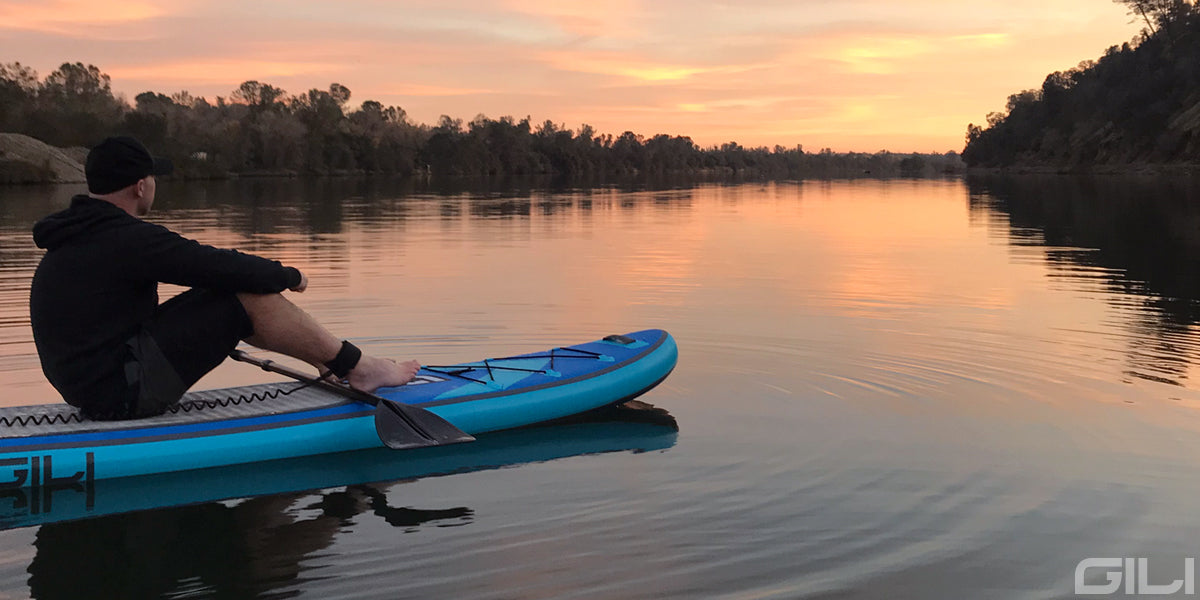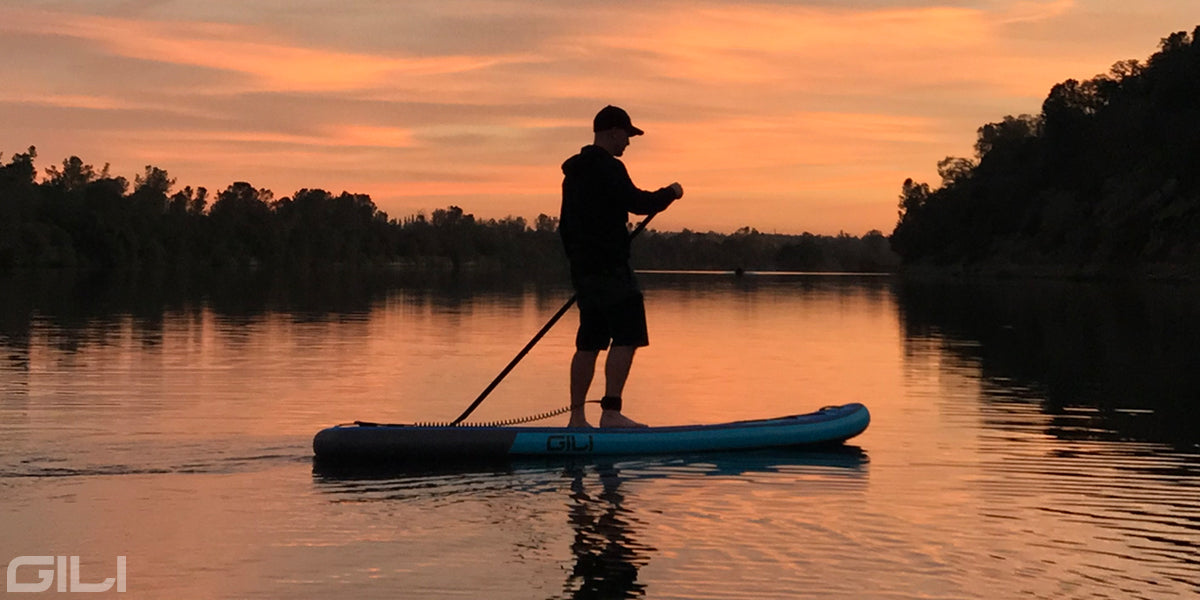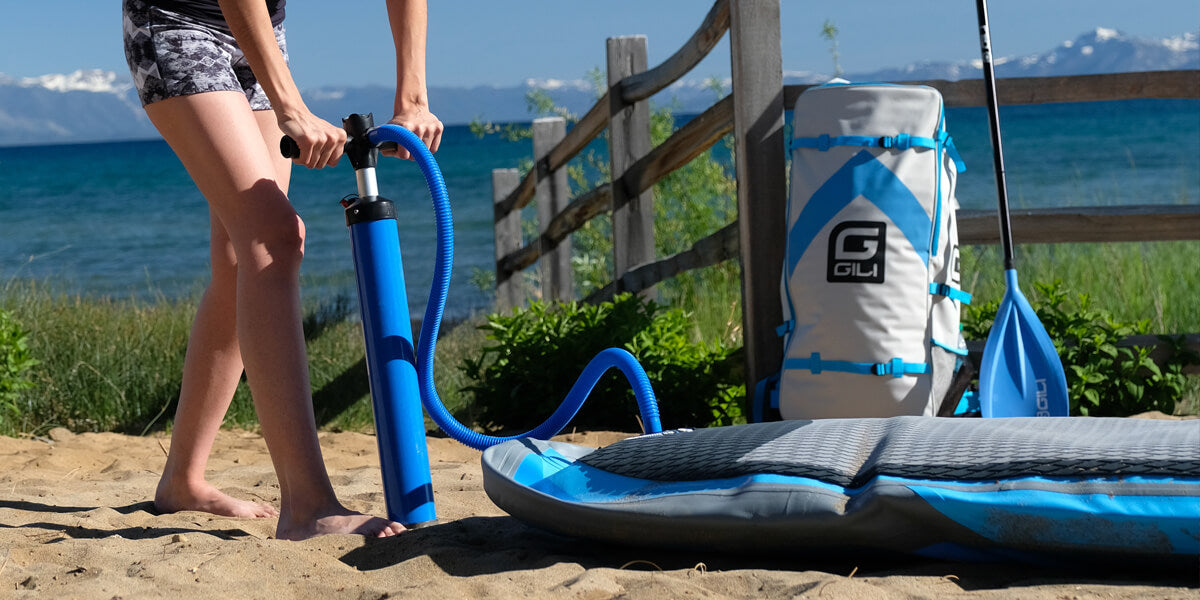Your Cart is Empty

Unfortunately, Inflatable Paddle Boards have been given a bad rap. You may have heard several untrue myths about inflatables mostly by people who have never even tried paddle boarding on an inflatable. We’re here to debunk those myths and set the record straight.
Absolutely, iSUPs perform well across all SUP activities, and even do some things better than hard boards such as whitewater SUP and SUP Yoga. Hard paddle boards are generally better for SUP Surfing and SUP racing.
 Myth #1: Inflatable Paddle Boards are built using cheap materials
Myth #1: Inflatable Paddle Boards are built using cheap materialsAt first glance you may think an inflatable looks like a pool toy, but the moment you stand on a quality inflatable sup you’ll instantly change your mind. Inflatable Paddle Board construction is continually pushing the edge of design and manufacturing. A high quality inflatable is made up of very strong PVC material that is cross stitched for durability and maximum rigidity. Many boards are “dual layer” boards, meaning they are made up of two layers of PVC, but even single layer paddle boards are very high quality. Single layer boards also have the added advantage of being lighter!
An inflatable paddle board (iSUP) inflated to the correct pressure feels just as rigid as a traditional hard paddle board!
Ever throw your hard paddle board off a rock cliff? Yeah, we didn’t think so, and don’t recommend trying it. However, throw your inflatable paddle board off of your houseboat roof, that rock cliff, or just about anywhere else and it’ll survive.
Inflatables actually are moredurable that hard boards. Don’t take our word for it - try it. Dent your board on some rocks? Inflatables don’t get dings or dents. Sure, you don’t want to expose your inflatable to sharp objects, but you wouldn’t do that to your hard board either!
Sure, sometimes hard paddle boards can out perform inflatables, but there are some cases inflatables are preferred over hard boards. If you are paddling in white water, having an inflatable SUP is much preferred over a hard board.
In our experience hard paddle boards only have a very slight increase in speed. However, you can catch waves in iSUPs, hard paddle boards intended for surfing do perform better in larger waves.
It depends on what you’re going to use your paddle board for. If you’re going to be mainly riding on lakes, white water, or small ocean waves an inflatable is the best choice.
 Myth #4: Only beginners use Inflatable Paddle Boards
Myth #4: Only beginners use Inflatable Paddle BoardsThis myth is simply not true - many paddlers of all skill levels actually prefer their inflatable to a hard board. Inflatables are much easier to transport and store, and perform well in many different conditions. If you’re an experienced paddler and have never been on an inflatable try it, you’ll be amazed!
A standard size inflatable paddle board (10 ft. 6 in. to 11 ft) will take you less than 7 minutes to inflate. A high quality board will include a dual stage hand pump. This means that the board fills with air with each stroke of the pump (the up-stroke and the down-stroke). When the board is nearly full, the pump can be set to single stage to make the final strokes easier.
You can unpack, unroll, inflate and ride your iSUP before your buddy can get his hard board in the water!

Trust us when we say this couldn’t be further from the truth! Inflatables are becoming more popular every year, and we see more inflatables out on the ocean. In fact, we tested our very first inflatable on some choppy water in Oahu, Hawaii. We do recommend that you rinse your inflatable with fresh water after use, but salt water and waves will not hurt an inflatable paddle board.
Repairing a hard paddle board is a big deal and is best done by a professional. Hard boards are sealed using a special epoxy, and often times an unprepared ding or dent can cause a hard board to take on water.
Inflatable paddle boards are actually more durable than hard boards, and they take bumps and bruises much better. One thing you do have to watch for is tearing the strong PVC layer, but it’s not a common problem. A good inflatable will come with a repair kit for emergencies just in case your inflatable takes a really hard beating.
For a small tear or leak you generally don’t have to bring an inflatable to a professional.
Inflatable paddle boards can usually be purchased for a few hundred dollars cheaper than a hard board. Don’t forget the savings on storage: you don’t need roof racks, tie downs, or a garage to store and transport an inflatable. We think an inflatable paddle board is a great purchase for new paddlers, we are betting you’ll use your inflatable much more than a hard board!
We hoped we've convinced you that inflatable paddle boards are as awesome as we think the are! If you have any questions regarding inflatables versus hard boards drop us a comment!
Comments will be approved before showing up.